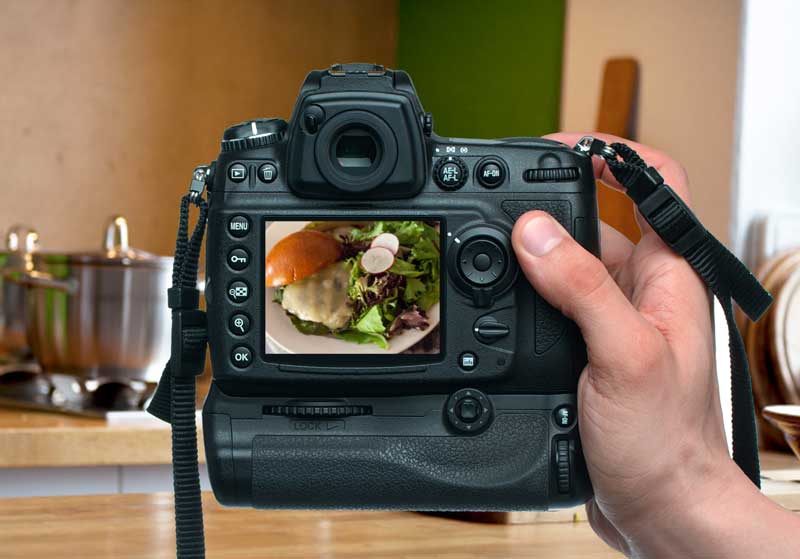Sign up for restaurant insights
How can a restaurant bring in new customers and expand brand awareness in the 21st century? Through a digital restaurant marketing strategy. After all, more and more consumers are jumping online to find the hottest restaurants in their area.
But creating a restaurant marketing strategy can feel overwhelming. To help, we’ve put together this guide to help you build a restaurant marketing strategy that will build online awareness for your restaurant brand and bring in new customers.
A restaurant marketing strategy, also known as a restaurant marketing plan, is a formal way to document, analyze, and track the performance of your marketing efforts and activities. As much as it’s a blueprint, it’s also a roadmap you can use to ensure your marketing strategy is both cohesive and comprehensive. By developing a restaurant marketing strategy, you can think constructively about the marketing decision you make for your business.
How can a restaurant marketing strategy help you reach more customers?
Marketing experts like to say that having a marketing plan is now “table stakes.” That means it’s the minimum a business has to do to be competitive. In other words, you can’t even keep up with the competition, let alone pass them by, unless you develop a strategy and continually act on it.
With a restaurant marketing strategy, you can:
- Attract new people who may be learning about or trying your restaurant for the first time
- Build brand awareness
- Expand your market
- Nurture customer loyalty
Consider your plan to be your greatest asset in your pursuit of increased revenue, better profitability, and building a reputation that will help your restaurant grow.
How to create a restaurant marketing strategy that will build your online presence
Take these steps to create a restaurant marketing plan that will help build your online presence, reach new customers, and increase your sales.
Know your target audience
The first step of creating a restaurant marketing plan is to make sure you know who you’re marketing to. A buyer persona is a profile that uses data based on marketing research to paint a picture of your ideal customer. Buyer personas dig into everything from where target customers might live to what they like to do in their free time to understand their pain points, preferences, and how they go about the decision-making process.
Once you have a buyer persona, you can refer to it when you’re tackling tasks like crafting your brand message, deciding on the price point for new menu items, and picking which social media channels to use most.
Perform a SWOT analysis
SWOT stands for:
- Strengths
- Weaknesses
- Opportunities
- Threats
SWOT is a tactic used in a wide array of industries to help evaluate a company in detail — and with a very critical eye. When conducting your SWOT analysis your goal is to walk away knowing:
- Your restaurant’s key differentiators
- Opportunities to improve your business
- growth opportunities to bring in additional audiences
- competitive threats to keep an eye on
Of course, this is a simplified version of what a SWOT analysis can entail. The process can be relatively top-level or take hundreds of hours using the services of an external firm. Tailor SWOT to your needs and the size of your company and revisit the process whenever you need to tweak your marketing strategy.
Identify what differentiates your restaurant from the competition
Speaking of key differentiators, it’s time to pinpoint what exactly it is that makes your restaurant better or at least different from any other brand in your market. This is your value proposition or what you’ll use as the central message for all your marketing efforts.
To identify your key differentiator, gather your team and start brainstorming with the following questions as your guide:
- Why do guests choose you over other restaurants that offer a similar menu or experience?
- What is your specialty? In the restaurant world, it could be your award-winning chili or the way your front-of-house team sings at the start of every service.
- Is there something all your positive customer feedback shares in common? Perhaps they all compliment your location or how quickly takeout orders are prepared.
Identify what makes you different, and you’ve identified a way to power your marketing.
Define your restaurant’s brand identity
Think of your brand identity as the personality of your restaurant. Maybe you’re the fun-filled pizza restaurant that has the best slices in town and gets all its produce from local farms. Perhaps you’re all about sustainability, using eco-friendly products, vendors committed to lowering their carbon footprint, and herbs snipped from your own rooftop garden.
When developing your brand identity, keep in mind that customers crave authenticity. Instead of creating a restaurant around your brand identity, make a list of reasons you opened your restaurant and why you’re passionate about your business model. Let that be the definition of what you stand for.
Understand your key performance indicators (KPIs)
KPIs, or key performance indicators, are data points used to measure your progress toward a predetermined goal. These metrics are typically performance-based and quantifiable, meaning they’re based on numbers like financial statements or statistics rather than feelings.
Some examples of popular KPIs in restaurant marketing include:
- Sales/revenue
- Total reservations
- Number of takeout/delivery orders
- Social followers
- Website visits
- Email opening rates
- Order volume
- Repeat customers
The KPIs you choose can be almost anything as long as they apply to your goals, properly defined, and checked regularly.
Decide on your digital marketing tools
Marketing tools are the applications and tactics you use to get the word out about your business. These channels include:
Social Media
Use social media to connect with current customers and reach new ones. Start by creating profiles that include contact information, such as your online ordering website link to drive takeout and delivery sales.
Don’t have an online ordering link for your restaurant? Restaurants that sign up with Grubhub for Restaurants get access to a free Direct Order Toolkit, which includes a commission-free direct ordering link you can include on your social media profile. Grubhub does not charge any marketing fees to restaurants on orders that come from a direct order link, which means you can easily offer takeout and delivery on your own channels, like social media, and protect your restaurant’s margin.
Email marketing
According to a study conducted by Campaign Monitor, every $1 businesses spend on email marketing results in an average of $44 in return. That’s an incredible ROI. To build an email marketing program, you’ll need email addresses from customers. Consider asking customers to opt into email marketing when they visit our website.
Your website
Nearly 70% of U.S. diners say a restaurant’s website has discouraged them from visiting, and 62% reported a website impacted their decision to order delivery or takeout from a restaurant, according to a survey conducted by MGH. Your website is the window into your restaurant and critical for reaching new customers and building customer loyalty.
Make sure your restaurant includes key info such as hours of operation, your address, and your phone number, as well as your menu. If you offer online ordering, make sure to include a direct ordering link for your customers on your website to make it easy for customers to order takeout and delivery directly from you.
Promotions
Marketing promotions are a great tool to help kick start your restaurant’s growth and increase order volumes on online ordering marketplaces, like the Grubhub Marketplace.
Whether you are running our powerful targeted Smart Promotions, perks, or sponsored listing, or setting your own promotional offers such as a percentage off or free delivery, promotions can help you target hungry diners interested in ordering from local restaurants just like yours.
Loyalty programs
According to a study conducted by Mintel, about 45% of consumers say they’re more likely to use online ordering services when restaurants offer a loyalty program. Loyal programs are a great way to build customer retention and a loyal base. When you partner with Grubhub for Restaurants, you gain access to loyalty marketing tools that can help you target, retain, and re-engage customers.
Online Ordering Marketplaces
Listing your restaurant on an online ordering Marketplace, like the Grubhub Marketplace can help you reach new customers and build awareness for your restaurant.
Madame Vo, a contemporary Vietnamese-inspired restaurant in New York City’s East Village, turned to Grubhub to reach new customers and build brand awareness.
“We were able to reach a broader range of customers, A lot of customers are now frequent customers.”
Yen Vo
Madame Vo
By joining the Grubhub Marketplace, Madame Vo was able to broaden their customer base and generate additional revenue to their business through takeout and delivery orders.
Make a realistic plan
Above all, your marketing plan needs to be realistic. If you’re a small team with a small budget, your plan should reflect that limited bandwidth. Don’t be afraid to launch your efforts in stages or to outsource some tasks to experts.
Set a budget
Finally, before you can launch your strategy, you need to know how much you’re going to spend. The Small Business Association recommends small businesses (those with less than $5 million in revenue) should allocate 7-8% of revenue to marketing. That money should be split between brand development (your social media channels and websites) and promotions (advertising).
Always optimize and adapt your restaurant marketing strategy to achieve your goals
Even after your marketing plan is in progress, the work is never done. Continue to optimize your strategy, using your KPIs to gauge progress and retooling as needed.
Your website will always need updating. New promotions are vital to keeping consumer interest. Pay as much attention to your marketing efforts as you do to the cleanliness of your tables and the seasoning in your signature sauce, and you’ll be set up for immeasurable success.
Ready to get started with Grubhub? Click here to join today.







